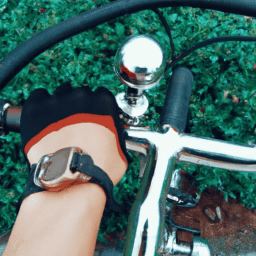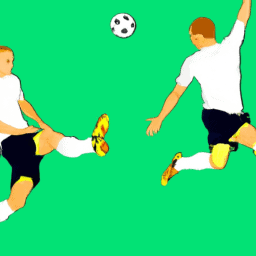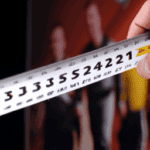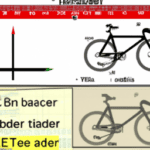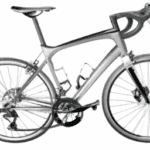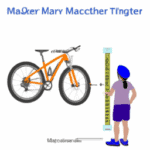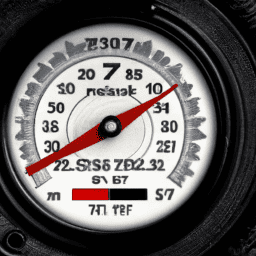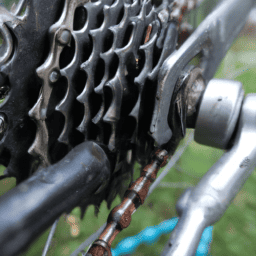Selecting the right bicycle is not a one-size-fits-all scenario. Comparable to the way a custom-fitted suit enhances your appearance and comfort, a bicycle that is precisely sized to fit your measurements will significantly enhance your riding comfort, performance, and pleasure.
As a virtual assistant, I’ve seen many people struggle with this decision, and that’s why I’m here to help. So, let’s dive into the details of what size bicycle you need.
Think of it this way imagine trying to run a marathon in shoes that are too small or too large. You’d be uncomfortable, slow, and likely to suffer from blisters or other injuries. The same goes for cycling: if your bike is the wrong size, you’ll experience discomfort, inefficient pedaling, and a higher risk of injury.
But fear not, with a few simple measurements and considerations, you can find the perfect fit for your body and riding style. So, let’s get started.
Key Takeaways
- Bike size is determined by multiple factors such as frame size, standover height, and reach, not just wheel diameter.
- Measuring inseam length, arm and leg length, and considering riding style and intended use can help determine the right bike size.
- Testing and adjusting the bike to ensure proper fit and comfort is important, including adjusting saddle and handlebar height.
- Choosing the right size bike improves posture, balance, and overall performance, allowing for longer, faster, and more enjoyable rides.
Understand the Importance of Choosing the Right Size Bike
You’ve got to understand the importance of choosing the right size bike if you want to have a comfortable and safe ride. Importance of fit cannot be overemphasized since it affects your posture, balance, and overall performance. A bike that’s too small or too big will cause discomfort, pain, and even injuries. On the other hand, a well-fitting bike will make you feel like you’re one with the machine, allowing you to ride longer, faster, and with less effort.
One of the common sizing mistakes is thinking that bike size is determined by wheel diameter. While the wheel size is a factor, it’s not the only one. Other crucial factors include frame size, standover height, and reach. Therefore, you should take into account your body’s proportions and riding style when choosing a bike size.
Consider your height, inseam, arm length, and flexibility to make an informed decision.
With that said, let’s dive deeper into how to choose the right bike size based on your height.
Consider Your Height
If you’re on the taller side, it’s important to ensure that the bike you select is compatible with your height. To do this, you need to consider your height and match it with the appropriate frame size. Here are four things to keep in mind:
- Take your height measurement without shoes on.
- Consult a bike sizing chart to determine the right frame size for you.
Try out different types of bikes to see which one feels most comfortable to ride. Keep in mind that different bike brands may have slightly different sizing guidelines, so it’s important to double-check before making a purchase.
When selecting a bike, it’s important to get the right fit to ensure the most comfortable and efficient ride possible. In addition to considering your height and the bike frame, you’ll also want to take into account your inseam length, arm and leg length, and other factors that impact your fit on the bike.
Inseam Length, Arm and Leg Length
Considering your inseam length, as well as your arm and leg length, it’s crucial to find the right bike fit for a comfortable and efficient ride. Proper measurement of these body parts can help determine the size and fitting options of the bike that’s right for you.
To measure your inseam length, stand with your feet shoulder-width apart and measure the distance from the ground to your crotch. This measurement will help determine the standover height of the bike you need.
Your arm and leg length can also play a role in bike fitting. Reach out to the handlebars and ensure that your arms are comfortable and not overextended. Your leg should also be able to extend fully while pedaling without feeling cramped.
Taking the time to measure these body parts and find the right fitting options can greatly improve your riding experience. Once you’ve found the right fit for your inseam, arm, and leg length, it’s important to consider your riding style to ensure the bike you choose is appropriate.
Riding Style
When it comes to riding style, it’s crucial to pick a bike that suits your needs and preferences. One of the first decisions you’ll need to make is whether you’ll primarily be riding on mountain or road terrain.
Mountain bikes are designed for off-road adventures with rugged tires, suspension systems, and sturdy frames. Road bikes, on the other hand, are made for speed and efficiency on smooth pavement with thin tires and lightweight frames. It’s important to choose the right bike type for your riding style to ensure that you have the best possible experience.
Another consideration when choosing a bike based on riding style is whether you prioritize comfort or performance. Comfort bikes are designed with comfort in mind, with features such as wider saddles, upright handlebars, and suspension systems to absorb shocks. Performance bikes, on the other hand, are designed for speed and agility, with features such as aerodynamic frames, drop handlebars, and lightweight materials.
Deciding between comfort and performance will come down to your personal preferences and what you plan to use the bike for. With these factors in mind, you’ll be better equipped to choose the right bike for your needs and preferences, allowing you to fully enjoy your rides.
When you’ve chosen your bike based on your inseam length, arm and leg length, and riding style, the next step is to test ride and adjust it to ensure the best fit.
Test Ride and Adjust
To test ride and adjust your new bike properly, hop on and feel the wind in your hair as you ride for at least 20 minutes. Studies show that this is the minimum amount of time needed to get a good feel for the bike’s fit and performance.
During this time, pay attention to the following factors:
- Proper fit: ensure that the bike is the right size for you. Your feet should be able to touch the ground while you’re sitting on the saddle, and your arms should be at a comfortable angle when holding onto the handlebars.
- Comfortability: make sure that you feel comfortable while riding. Check that the saddle is at the right height and that it’s not too hard or too soft. Also, ensure that the pedals are easy to push and that the brakes are responsive.
Once you’ve ridden your bike for at least 20 minutes, it’s time to adjust it to ensure that it’s perfect for you. Here are a few things that you can do to make your bike fit like a glove:
- Adjust the saddle height: use a wrench to raise or lower the saddle until your feet can touch the ground while you’re sitting on it. This will ensure that you’re able to stop easily when necessary.
- Adjust the handlebar height: use a wrench to raise or lower the handlebars until your arms are at a comfortable angle. This will ensure that you can ride for longer periods without experiencing discomfort.
By following these steps, you’ll be able to ensure that your new bike fits you perfectly and that you’re comfortable while riding it. Take the time to test ride and adjust your bike properly, and you’ll be rewarded with a smooth, enjoyable ride.
Frequently Asked Questions
What type of bike is best for commuting?
For commuting, a hybrid bike with a lightweight frame and durable tires is ideal. It should have several gears for different terrains, and accessories like a rack for bike storage and commuting gear essentials.
How do I choose the right saddle for my bike?
To choose the right saddle for my bike, I prioritize saddle comfort and saddle fit. Comfort is key as an uncomfortable saddle can cause pain and hinder performance. Fit is also important as it affects positioning and stability while riding.
What type of pedals should I use for my bike?
When considering pedals for a bike, the two main options are clipless and platform. Clipless pedals provide better efficiency and control, but require special shoes. Platform pedals are easier to use and allow for any footwear, but may be less efficient.
Can I adjust the handlebars and stem to fit my body?
Yes, I can adjust the handlebars and customize the stem to fit my body. However, it’s important to note that proper fit also involves the correct bike size. Handlebar adjustment and stem customization can improve comfort and control, but they are not a substitute for selecting the right bike size.
How do I maintain my bike for optimal performance?
To maintain my bike for optimal performance, I regularly clean it with gentle soap and water, making sure to avoid high-pressure water. I also use lubrication techniques to keep all parts running smoothly.
Conclusion
So, there you have it – everything you need to know about choosing the right size bike. But before I wrap things up, I want to touch on a theory I’ve come across during my research.
Some people say that the size of the bike doesn’t matter as long as you can touch the ground with your feet. While this may be true for some casual riders, it’s not always the case.
The truth is, riding a bike that’s too small or too big can cause discomfort, pain, and even injury. It can also affect your performance and make your cycling experience less enjoyable.
So, don’t underestimate the importance of choosing the right size bike and taking the time to find the perfect fit for you. Your body will thank you for it in the long run.
